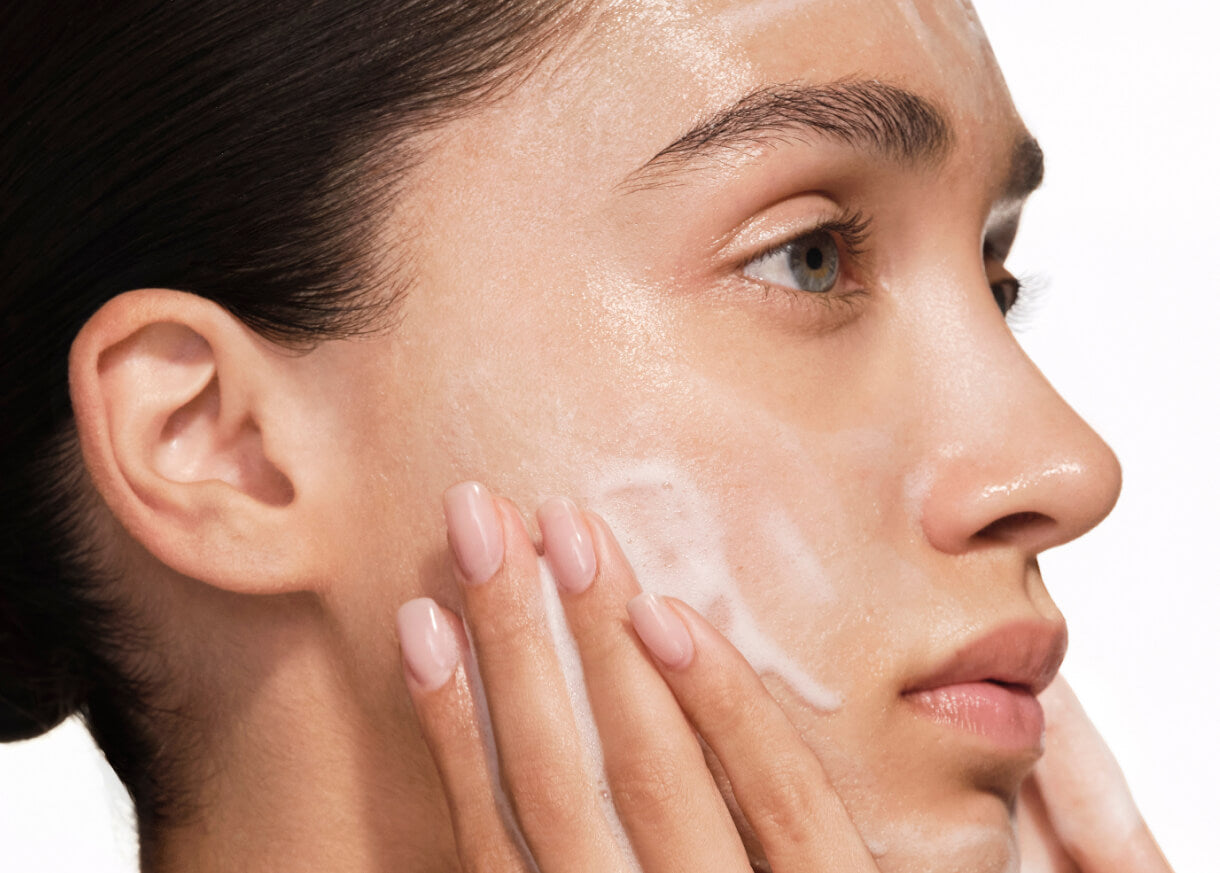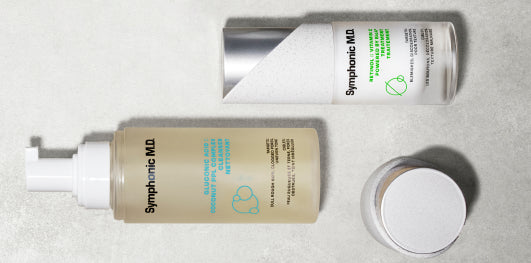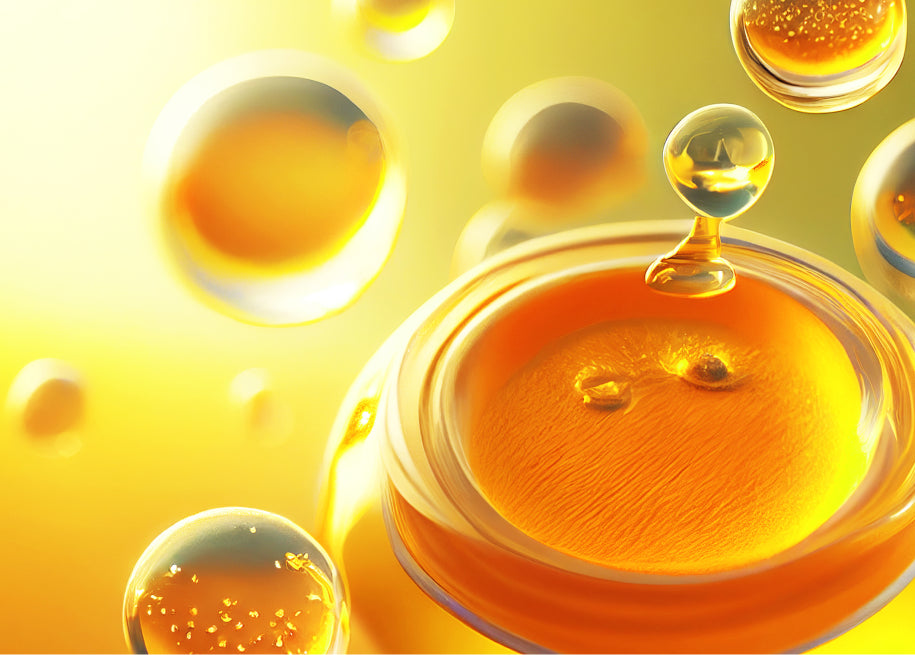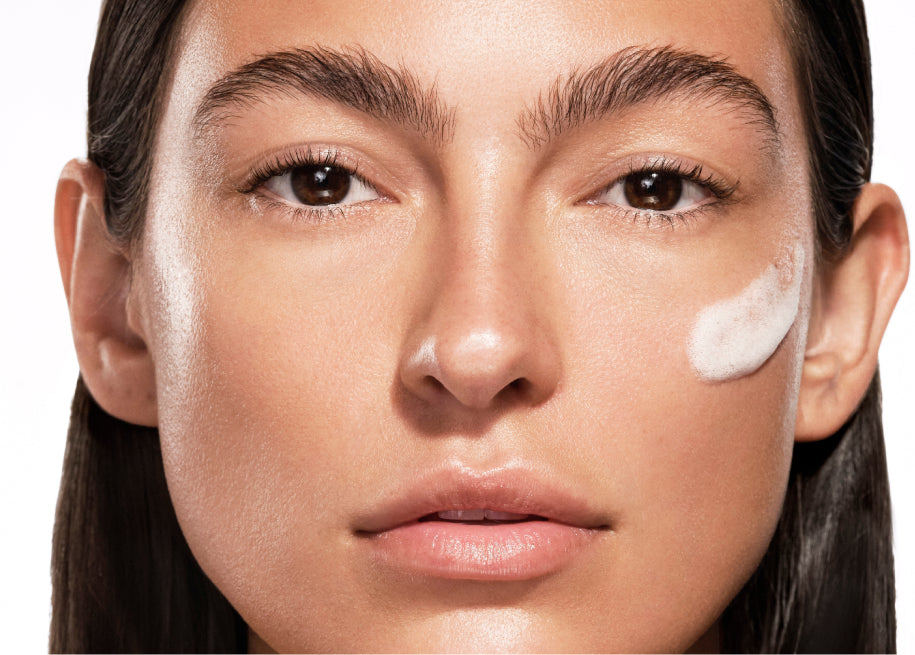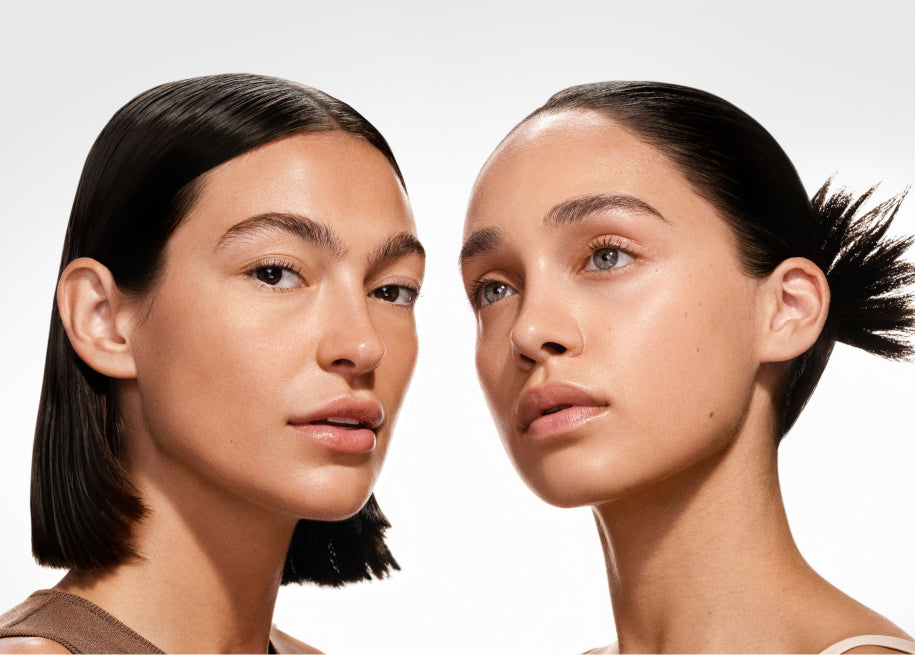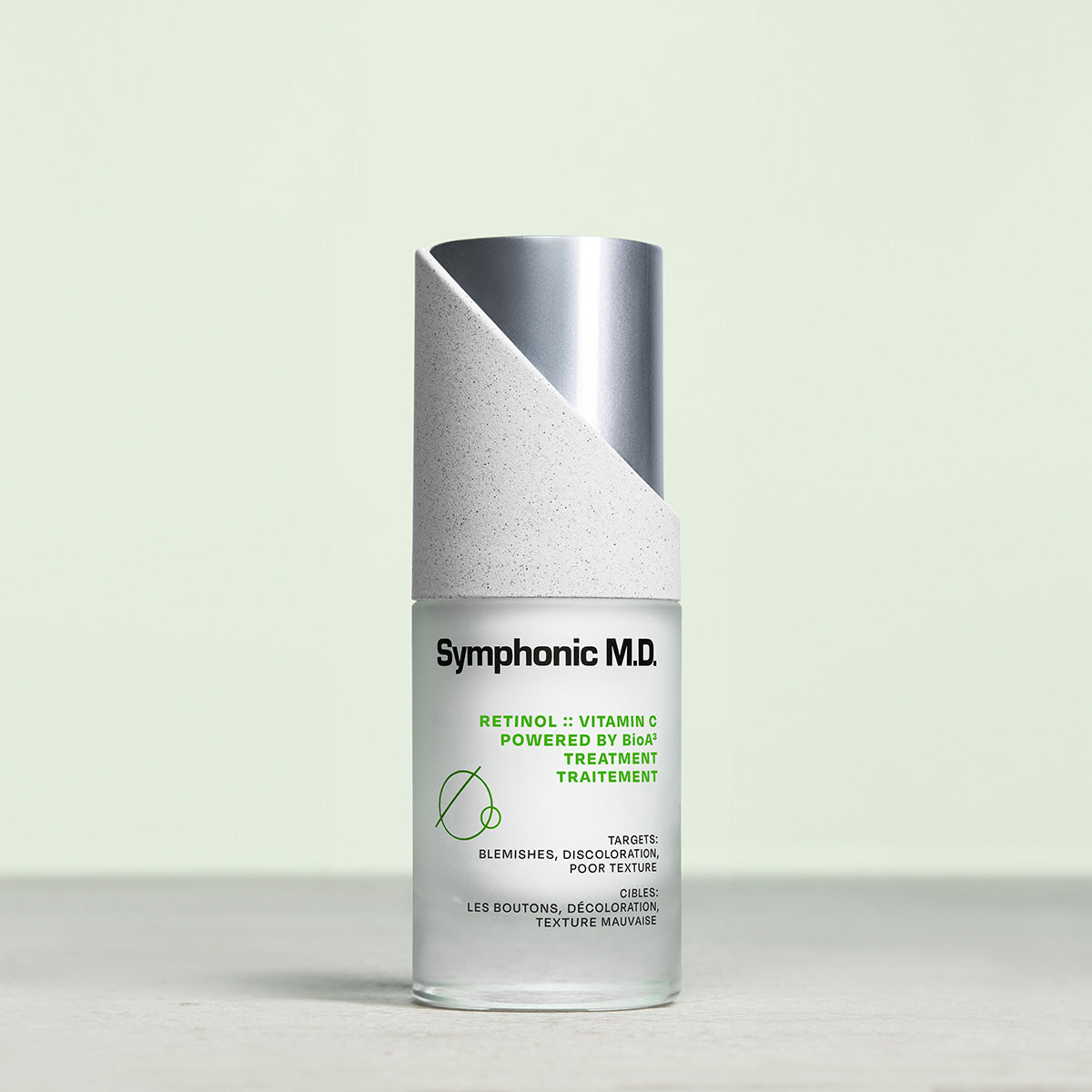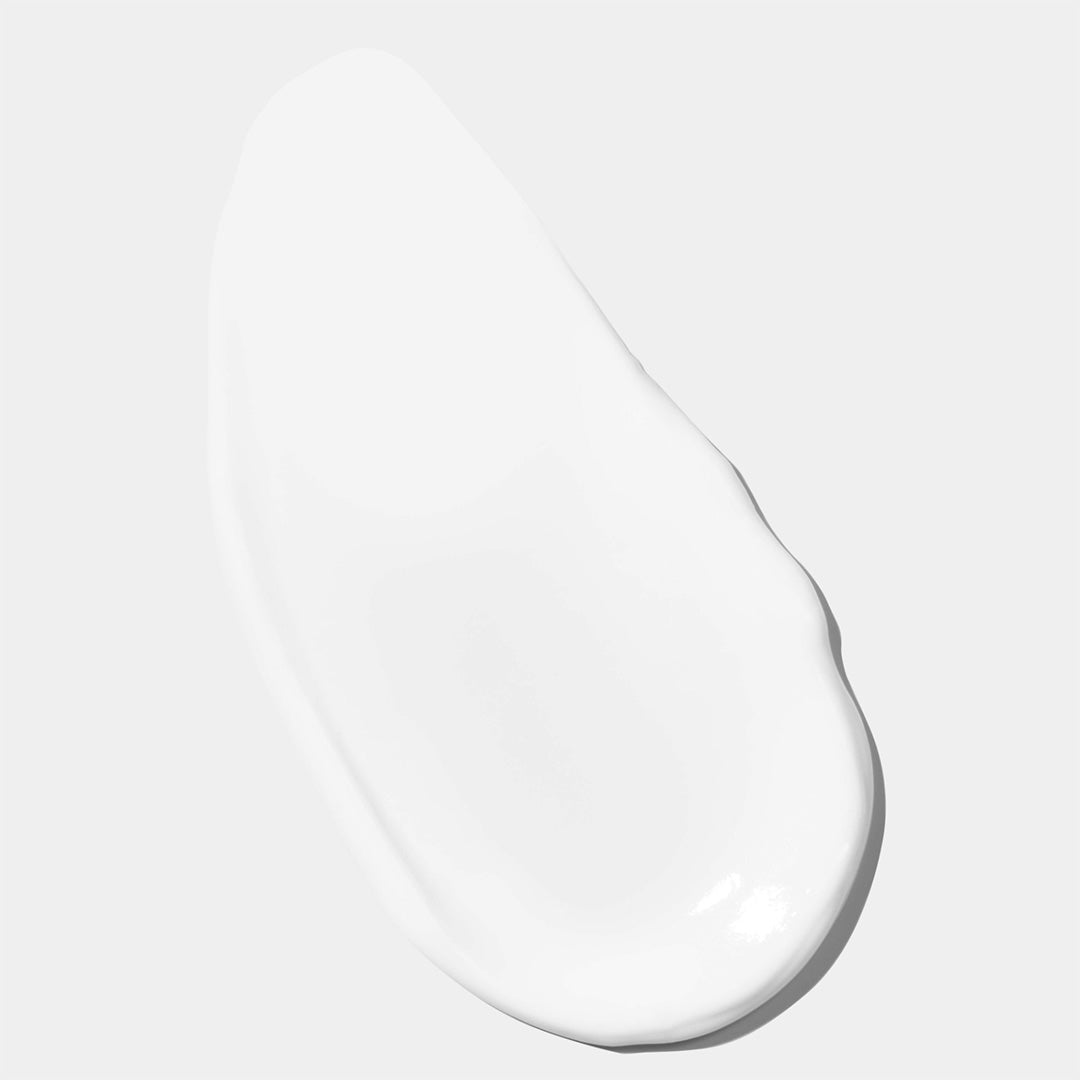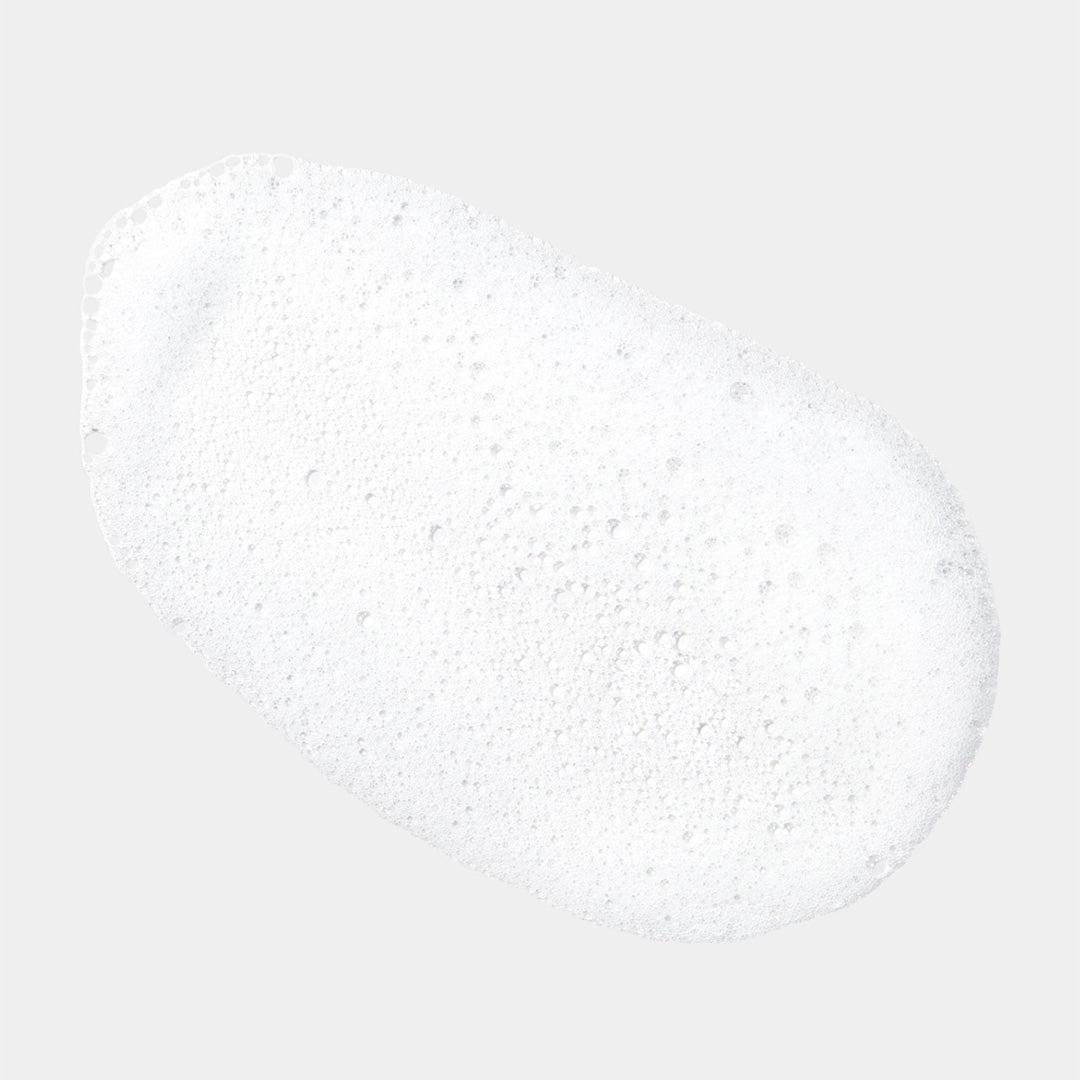If you’ve ever found yourself wondering how to apply facial cleanser properly, or whether you should wet your face before cleansing… we’re here to help your chosen facial cleanser work its magic.
The importance of facial cleansing
Your skin goes through a lot every day. It’s exposed to dirt, air pollution, and hundreds of other substances. Plus, it accumulates natural oils and dead skin from your body. If you still have teenage skin, or you wear make up frequently, then your skin will need extra cleansing care.
Without cleansing, all that dirt, oil, and dead skin builds up on your face. It can block pores and skin follicles which create uncomfortable blackheads and whiteheads.
The right cleanser will take your face back to basics every day – and minimize pesky pore blockages.
How does facial cleanser work?
Facial cleanser is one of those skincare products that does a ton of different tasks at once. It uses a mix of active ingredients, surfactants, and emollients to support clear skin.
- Surfactants bind to the oils, dirt, and makeup on your skin. When you rinse the cleanser off, the surfactants are washed away, taking the dirt with them.
- Emollients moisturize your skin while you wash. Although surfactants are designed to just take away the bad oils and dirt, emollients make sure that your skin isn’t at risk of dryness.
- Active ingredients are like the superpowers of a cleanser. They help with specific aims, such as adjusting the cleanser for a specific skin type or skincare concern.
Find out more about the science inside your facial cleanser in our comprehensive guide to facial cleansers: What Is A Cleanser & What Does A Face Cleanser Do For Your Skin?
How our Gluconic Acid :: Coconut PPL Complex Cleanser works
The Gluconic Acid :: Coconut PPL Complex Cleanser comes with active ingredients to keep your skin soft, even, smooth, and toned.
Here’s what you need to know about the unique PHA formulation:
- Gluconic acid (1%) exfoliates and deep cleans pores. It also stimulates your skin to repair itself, while modulating keratinization so that your skin stays smooth and even.
- Arlasilk CDM is a phospholipid complex made from coconuts. It’s a mild cleanser that also gives your skin anti-microbial protection, so you’re less likely to get blocked or infected pores.
It’s safe to use whether you have dry, normal, oily, or sensitive skin.
It’s even safe for people wearing contact lenses, for anyone who’s made the mistake of getting cleanser in their eyes before!

The Gluconic Acid :: Coconut PPL Complex Cleanser comes with active ingredients to keep your skin soft, even, smooth, and toned.
How to use a facial cleanser
The most important factor in using facial cleanser is to choose the right one for your skin type, issues, and goals. But once you’ve found that magical formula, you need to know how to apply the cleanser correctly.
Step 1. Tie your hair back
It might sound basic, but it makes life much easier. When your hair is out of the way, it’s easier to apply cleanser to the whole of your face. You don’t want to miss the areas around your hairline or chin, where many people have skin issues.
Step 2. Wash your hands
You wouldn’t use a dirty washcloth to cleanse your skin. Don’t risk dirty hands, either!
Washing your hands first makes sure that you’re not transferring dirt, oils, or bacteria from your hands onto your face.
Step 3. Dampen your face
You should wet your face before applying most cleansers. However, some can be used on a dry face.
Our expert recommendation? Dampen your face with lukewarm water to open your pores without causing redness.
Step 4. Apply your cleanser
Take a dime-sized amount of cleanser and gently apply it to your face with your hands.
There are a couple of different methods for applying cleanser. You could try …
- The blob method. Apply cleanser in small blobs to your cheeks, nose, forehead, and chin. Then rub the blobs in. This is a good way to get thorough coverage with your cleanser.
- The pat method. Rub the cleanser between your hands, then pat it onto all areas of your face. This method helps you to apply cleanser more lightly, so people with sensitive skin may prefer it.
Step 5. Work the product into your face
Now it’s time for the real cleansing part. It’s not enough to just dab the cleanser onto your face, then rinse it off. You need to work the cleanser into your face so that your skin really benefits.
Massage the cleanser all over your face in small, circular motions. If you have any problem areas, make sure that you massage them especially thoroughly.
Keep cleansing for at least a minute, making sure that you haven’t missed a single spot.
Step 6. Rinse off the cleanser
Next, rinse the cleanser off with cool water to help your pores close up again. Some people prefer to do this with their hands, while others use a face cloth or cotton pads. Just make sure that you remove all the cleanser.
Step 7. Repeat the process
For the best results, we recommend reapplying cleanser, cleansing, and rinsing for a second time. This makes sure that your skin is completely clean.
Step 8. Pat your face dry
Once you’ve rinsed — and repeated — pat your face dry with a clean face towel. Your cleansing face towel shouldn’t be used for anything except your face, or you’ll just be putting bacteria and dirt straight back onto your skin. Make sure you pat the skin gently, instead of rubbing, so that you don’t cause any skin irritation.
Step 9. Continue the rest of your skincare routine
Cleansing is just the start of an optimized skincare routine. Once your face is clean, dry, and fresh, you’ll be ready to apply moisturizer, sunscreen, make up, or any other products that work for your skin.
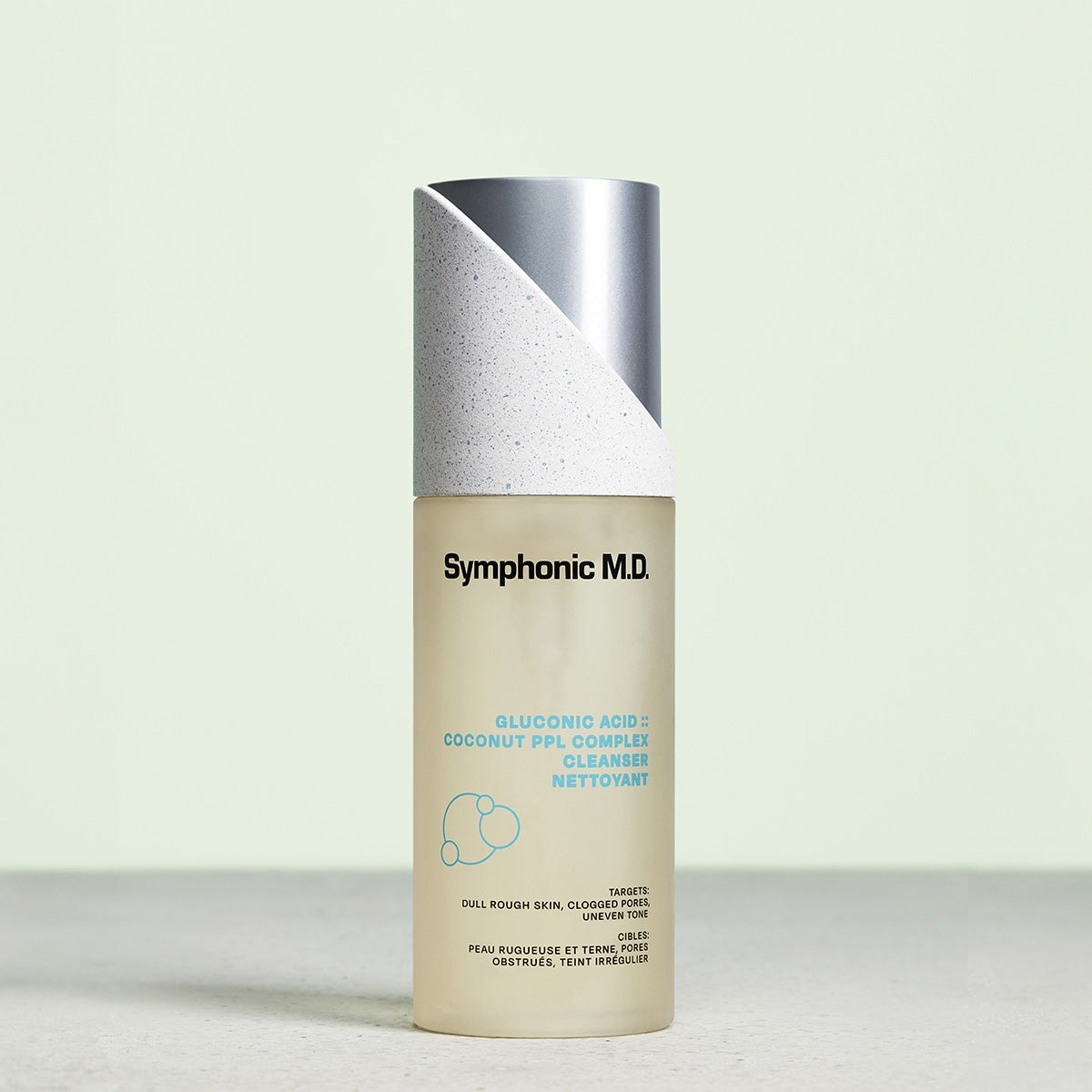
Gluconic Acid :: Coconut PPL Complex
This calming antimicrobial formula targets dull skin, clogged pores, and uneven tone — gently shedding cells while strongly stimulating barrier repair to leave skin soft and purified.
Advanced cleansing techniques
Want to get even more of a glow? Consider getting a facial brush.
The right brush, used the right way, will make your skin look fresh, bright, and healthy. Just be careful not to overdo it. Brushing your skin too often will make it thin, raising the risk of dryness or acne.
If you have oily skin, brushes can help you get a deeper cleanse. They’re also great for stimulating circulation and boosting cell regeneration. However, if you have sensitive skin, then you may find brushes too abrasive. Start slow and see how your skin responds.
Look for a brush with soft bristles in different sizes for the different areas of your face. You can choose between a simple, hand-held brush or a battery-operated one. Some brushes on the market also have built-in LED lights to boost collagen, clear acne, and encourage skin cell regeneration.
Benefits of cleansing
Once you get into a regular cleansing routine, you’ll see several benefits for your skin:
- Deep cleaning. Cleansing goes deeper than just removing surface dirt. It keeps your pores free from impurities and clogs – preventing blackheads and breakouts.
- Hydration. When you deep-cleanse your skin, you also moisturize it. The right cleanser will help balance your skin’s natural oils, keeping you looking fresh, firm, and hydrated.
- Improved absorption. Cleansing prepares your skin for the next steps in your skincare routine. Whether you use toner, moisturizer, serum (or all three!), your skin will be more receptive to their benefits.
- Brighter complexion. Facial cleansers also help to remove dead skin cells. Clearing away dead skin helps your skin to renew faster – and leaves you looking radiant.

10 cleansing rules
To help you get that glow, we’ve collected the 10 commandments of facial cleansers. Follow these do’s and don’ts for the best skin of your life.
Cleansing prepares your skin for the next steps in your skincare routine.
Choose the right cleanser for your skin
It doesn’t matter whether your friends swear by a particular cleanser, or 1000 customers recommend it. The best cleanser is the one that works for your specific skin. Every body — and face — is different.
- Dry or sensitive skin often responds best to cream- or oil-based cleansers.
- Oily or acne-prone skin will respond better to a foaming facial cleanser, or one that uses salicylic acid.
- Combination or normal skin can usually handle any type of facial cleanser.
Don’t rinse with hot water
Washing your face with hot water makes your skin dry and increases the risk of irritation. That’s because it opens your pores, strips away natural oils, and draws moisture out of your skin.
You should always prep for cleansing with lukewarm water, then rinse with cold water.
Cleanse your face twice per day
Skincare experts recommend using facial cleanser twice a day: when you get up, and when you go to bed. But if you only have time for one cleansing session a day, choose the evening. Going to sleep with dirty skin is a recipe for disaster.
Don’t forget to cleanse after working out, too. Sweat, dirt, and oils can build up on your face during exercise, so you’ll want to clean up right away.
Remember your neck and jawline
When we talk about facial cleansers, we’re really talking about your neck and jawline too. Just like applying moisturizer and sunscreen, you should cover everything above your shoulders!
Some people even choose to cleanse down to the chest. If you have oily skin or your décolletage is a problem area, you might find that cleansing regularly helps.
Double cleanse
Double cleansing means going through your facial cleanser routine twice, just like we recommended in the 9-step facial cleansing routine. As soon as you finish rinsing for the first time, you should re-apply facial cleanser, massage, and rinse again.
Double cleansing is especially important for people with oily or acne-prone skin. However, if you have dry or sensitive skin, make sure you’re using a gentle cleanser that won’t strip out too much moisture.
Don’t over-rub your skin
What’s the best tool for facial cleansing? Your fingertips! You can cleanse your skin gently, thoroughly, and easily with your own hands. In fact, the American Academy of Dermatology Association recommends fingertips over washcloths or sponges to avoid irritation.
Plus, you get a facial massage … What’s not to love?
If you want an even deeper clean, then you could also look into sonic brushes or LED brushes.
Use a clean towel every time
Always use a clean towel to dry your face, and make sure the towel isn’t used for anything else. You just put all that effort into cleansing your face, so you want to keep it fresh.
Don’t exfoliate everyday
Facial cleansing will gently remove dead skin, dirt, and oil. Exfoliating will give your pores even more of a deep-clean, but you shouldn’t do it too often. If you’re already following a cleansing routine, then you only need to exfoliate a couple of times a week.
Research active ingredients
There are thousands of facial cleansers on the market, and thousands more active ingredients for you to choose from. It can feel overwhelming.
When you’re choosing a facial cleanser, think about your skin type, any skin issues, and your goals. What exactly do you want the facial cleanser to do for you?
From there, you can start looking for active ingredients which match your goals. For example, our Gluconic Acid :: Coconut PPL Complex Cleanser contains active ingredients like gluconic acid which promotes exfoliation, cell renewal and modulates the keratinization process. It stimulates repair of damaged skin barrier and has excellent moisturizing properties for deep cleaning and a smooth skin texture. While a multi-functional phospholipid complex derived from coconut gently cleanses your skin, clearing bacteria and clogged pores, providing anti-microbial protection.
Don’t assume you need a toner or astringent
You might have been told that you need a toner or astringent as part of your skincare routine. But skincare science has advanced significantly in the past few years.
The latest generation of facial cleansers are very effective at removing dirt and keeping skin toned. If you find the right cleanser, you might not need a toner.
The Bottom Line
Facial cleansers are the superheroes of skincare. They keep your skin free from dirt, oils, and dead skin cells — clearing the way for radiant, toned, and problem-free skin.
However, to get the most benefits, you’ll need to find the right facial cleanser for your skin type and learn how to use facial cleanser correctly.
FAQs
Can I wash my face with just water?
If you have exceptionally sensitive skin, then you might be more comfortable cleansing with just water at least once a day. However, dermatologists recommend that you should still use a gentle cleanser in your evening skincare routine to wash off the dirt from the day.
Can I use cleansing devices?
There are many types of cleansing brushes on the market. Some of them can be useful for getting a deep clean or addressing specific skin problems.
But be careful! Using brushes too hard or too often can irritate your skin. Over-brushing could cause redness, microabrasions, or increased oil production.
Can I just wash my face in the shower?
The skin on your face is different from the skin on your body. It’s more delicate and sensitive — so it needs a different care routine. We recommend cleansing your face separately, after you’ve showered.
Should I wet my face before cleanser?
You should always splash water on your face before using a rinse-off facial cleanser. It will activate the cleanser and help you work up a good lather.
How long should I wash my face?
Most dermatologists recommend spending between 30 seconds to 2 minutes on cleansing your face. That includes wetting your face, applying cleanser, cleansing, and rinsing!
The actual cleansing phase — when you massage the cleanser into your skin — should take about 60 seconds.
How often should I wash my face?
You’ll need to find the right balance for your skincare routine.
Under-cleansing will leave oil, dirt, and dead skin on your face. But over-cleansing can cause other problems, like increased oil production and redness.
For most people, the sweet spot is cleansing their face twice a day: once in the morning, and once at night. You should also use facial cleanser after working out.
